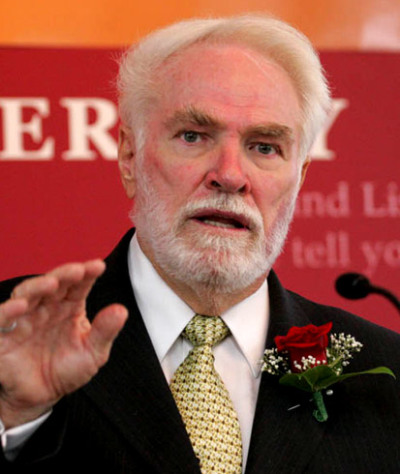How Do Religions Grow? Southern Baptists, Reversing the Decline (Part 7/8)

Today, the Southern Baptists claim just under 15.5 million members, thus making them the largest Protestant church in the United States. Over the last 150 years they have had a reputation of leading in evangelistic outreach and the formation of new churches. Many expected this growth to continue by using the same methods that had proven themselves so successfully in the past. This, however, has not been the case.
Instead, the denomination this last year lost 236,467 members, which translates to the largest loss since 1883. Over the same period total baptisms declined by 305,301 or about 1 in every 51 members. The bright spot was that the number of churches grew by one percent, to 46,449, which was due to a strong emphasis in church planting.
In studying the growth and decline of churches and movements over a long period of time I have determined that a church (or a denomination) goes through seven stages. They are:
1. vision
2. formation
3. gathering
4. apex
5. nostalgia
6. polarization
7. death.
It appears that the Southern Baptist Convention is now going through the fifth phase of their existence.

In the past the Southern Baptists have been leaders in personal evangelism, christian discipleship, and church planting. In comparing this to the Micro, Meta, and Mega scale it is apparent that they have concentrated on methods that fall into the Micro and Meta areas.
Their success is without question. They have also been the prime developers of programs and methods that can help all to better prepare themselves for work in these areas. The existence of the LifeWay Christian Resources of the SBC has guaranteed the continued flow of excellent programs on the three areas of concentration. Up until recently this plan has proven itself to have a positive effect that leads to growth.
But what has recently happened that has led the SBC to a state of decline?
The question must be asked in order to determine if the tried and proven methods of the past are still useable. It would seem that a contemporary means of going forward would be to study not only the past methods, but also to see what is being done by others that are being successful.
Recently a group of Southern Baptist leaders were called together to discuss the decline of the SBC. The result was a paper they presented strongly advocating an even greater emphasis on evangelism, discipleship and church planting, showing that they still believed that the old methods were the right ones for the future.
Allow me to offer for discussion the fact that the decline can be traced to four reasons.
The first is the declining birth rate among Southern Baptists. It has been reported that in 1960 the birth rate in the United States was 3.7 and by 2014 it has fallen to 1.9. As in Germany and other European countries, if their birth rate falls below the 2.1 children per couple, they are in danger of decline as a people. To fall beneath the number 2.1 means that with time their identity will be slowly dissipated. A recent Pew study found that Southern Baptists are aging, with the median age ranging from 49 in 2007 to 54 in 2014.
Not only do we have fewer babies coming our way but we are also losing our young people. In one recent study reported by Thom Rainer, it was determined that 70% of church going young people drop out of church between the ages of 18 and 22, or the age when many are studying in the university. The study stated that among incoming freshmen, 43.7 percent said they frequently attend religious services but by the end of their junior year attendance was down to 25.4 percent.
A second fact that needs to be looked at has to do with the large number of published programs being produced but the lack of both good delivery systems and continuity of use. As an evangelism professor I have thirty different programs developed for personal evangelism, each one being good and solid, but now few of them are being used in the Church. We throw away the old programs and create new ones that seldom actually get into the hands of the Baptist laypeople who can effectively use them.
A good example of this looks at the introduction of an outstanding program on Discipleship introduced in the early 1980s called MasterLife. In its early stages no one could buy the materials unless they had attended a workshop or taken the course itself. It was having phenomenal success but later it was determined that it could be put into another form and sold in bookshops to anyone who wanted to purchase it. Today Masterlife is used only by a few while LifeWay had come out with a new program of discipleship. The old program could easily be used by the many millions who never had the opportunity of using it but now it lays upon the trash heap of old programs. New thinking might include more emphasis on delivery systems and less on the creation of new programs.
Thirdly, our leadership continues to rely on the old dependable big three of evangelism, discipleship and church planting. There are new methods and new ways of doing better what we have done in the past but now is the time for Southern Baptists to break out and study other groups that are growing and to be open to use more modern methods such as the internet.
In making new suggestions it should be observed that the Convention has designated all domestic mission programs must be run through the North American Mission Board and all overseas programs must be approved by the International Mission Board. These two Boards have an amazing record of success but in some cases they have also become a bottleneck for new and creative ideas. There have been many great new projects that Southern Baptist individuals and churches have developed but they have failed to gain support of the mission boards.
The old adage at work here says, "We will reject this idea because we did not originate it."
A good example are some of the excellent new Christian movies being produced by churches and individuals. Southern Baptists embraced these new productions once they were a success, but they were not a part of a strategy that brought them to life. Any new strategy envisioned by the SBC must have evangelism, discipleship and church planting as the main content of their program but new and better delivery systems should be considered.
A fourth aspect is their lack of the development of a Mega strategy. True, they are among the best at the Micro and Meta levels but they have little that could be called a Mega strategy. Other groups who are growing are using new tools very effectively, such as the Internet. Others are also targeting university students for missions and going to large businesses and influencing their board members to support their cause so that the business will finance their plans.
There are some advantages to look at others who are attempting to win the world to their cause, and to learn not only what they are doing but to learn better ways in order to be more effective.
Concerning the news of the SBC in decline, Ed Stetzer, a Southern Baptist researcher, wrote in a blog, "It is not too late to make changes that will reverse it — and to do so together."
It would be wrong for Southern Baptists to give up on evangelism, discipleship and church planting, but at the same time if they are to begin to enter again into a growth cycle they will need to do what the old proverb says, "think outside the box."
Also see:
How Do Religions Grow? What Evangelicals Can Learn From Comparing Groups (Part 1/8)
How Do Religions Grow? Assemblies of God, Evangelism With Feeling (Part 2/8)
How Do Religions Grow? Jehovah's Witness, a Strict Taskmaster (Part 3/8)
How Do Religions Grow? The Gay Rights Movement's Mega Strategy (Part 4/8)
How Do Religions Grow? Islam's 4 Steps to Change the World (Part 5/8)
How Do Religions Grow? Mormons 'Hidden in Plain Sight' (Part 6/8)
How Do Religions Grow? Without a Vision, the People Perish (Part 8/8)




























